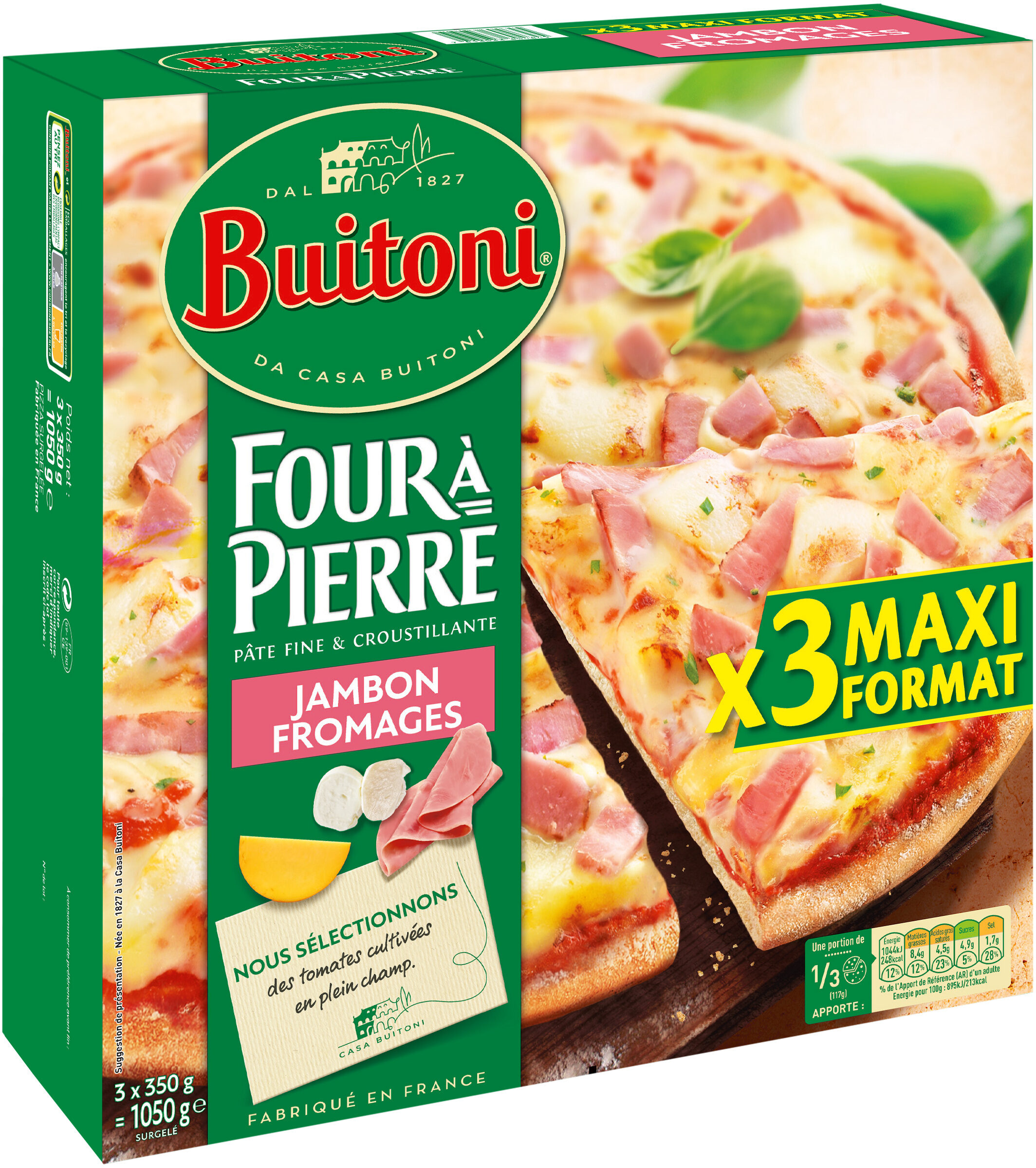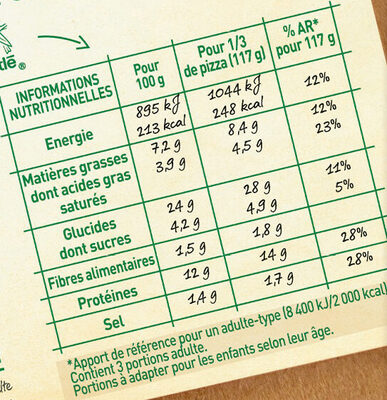BUITONI FOUR A PIERRE pizza surgelée Jambon Fromage 3 paksx350g - 3x350g
This product page is not complete. You can help to complete it by editing it and adding more data from the photos we have, or by taking more photos using the app for Android or iPhone/iPad. Thank you!
×
Some of the data for this product has been provided directly by the manufacturer NESTLE FRANCE. - Customer service: Contact form 0 809 400 412 (service gratuit + prix de l'appel)
Barcode: 7613033604645 (EAN / EAN-13)
Common name: Pizza surgelée
Quantity: 3x350g
Packaging: Box, Sleeve, fr:Etui en carton, fr:Film en plastique, fr:Pizzas
Brands: Buitoni, Four à Pierre
Categories: Meats and their products, Frozen foods, Meals, Pizzas pies and quiches, Meals with meat, Pizzas, Pork meals, Frozen pizzas and pies, Frozen pizzas, Pizza with ham and cheese
Labels, certifications, awards:
Green Dot, Made in France, Triman

Origin of the product and/or its ingredients: FRANCE
Manufacturing or processing places: France
Countries where sold: France
Matching with your preferences
Other information
Preparation: Pour une pizza réussie : Préchauffez votre four sans la plaque de cuisson. Chaleur traditionnelle recommandée 200°C ou chaleur tournante 180°C. Laissez la pizza à température ambiante sur la plaque hors du four pendant le préchauffage. Enfournez à mi-hauteur la pizza 16-18 min sur la plaque froide.
Conservation conditions: 3 jours : dans le compartiment à glace d'un réfrigérateur. Plusieurs mois : dans le compartiment à -18°C d'un réfrigérateur 3 étoiles ou dans un congélateur. Et ce jusqu'à la date indiquée sur l'emballage.
Customer service: Nestlé France, 34-40 rue de Guynemer 92130 Issy-les-Moulineaux
Report a problem
Data sources
The manufacturer NESTLE FRANCE uses Equadis to automatically transmit data and photos for its products.
Product added on by kiliweb
Last edit of product page on by org-nestle-france.
Product page also edited by date-limite-app, ecoscore-impact-estimator, julie-yuka, openfoodfacts-contributors, packbot, quentinbrd, roboto-app.












